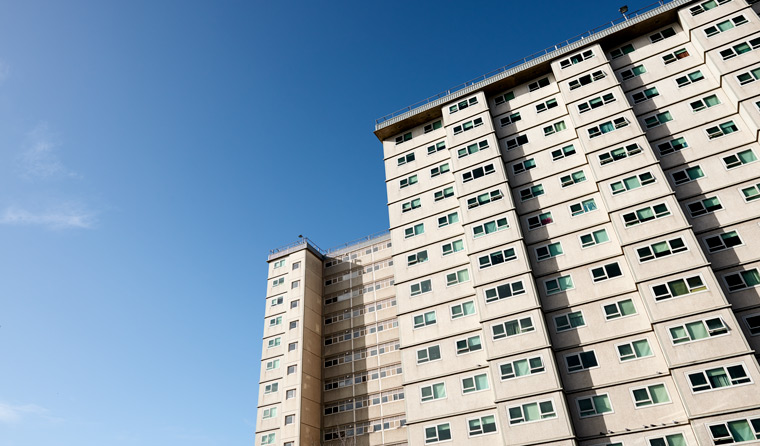News
Superspreading events due to environment, not individuals
That is the view of prominent virologist Associate Professor Ian Mackay.
 Superspreading events have become a major focus for research and suppression efforts.
Superspreading events have become a major focus for research and suppression efforts.
Circumstances play a major role in allowing a single person to spread the highly contagious SARS-CoV-2 virus to dozens or even hundreds of others, University of Queensland virologist Associate Professor Ian Mackay told newsGP.
Superspreading events have become a major focus for research and suppression efforts, with 80% of secondary transmissions likely to be caused by around 10% of carriers, according to a recent mathematical modelling preprint study by researchers at the London School of Hygiene & Tropical Medicine.
In Science, UCLA Professor Jamie Lloyd-Smith has pointed out that ‘most people do not transmit’ the virus, with the average reproduction number (R0) of the virus just that – an average.
Victoria’s surge in community transmission has been driven by a number of superspreading events thought to connect quarantine hotels to large family gatherings, while another major cluster has emerged in a public housing tower in Melbourne.
Victoria recorded 177 new cases on Monday, its eighth straight day with a triple-digit increase – though the first time in three days the state has recorded a daily total below 200.
Associate Professor Mackay said so-called superspreading events are more likely due to a person who is infectious for a long period having prolonged close contact with many susceptible people, rather than a person who is unusually good at spreading the virus.
‘Biology is a spectrum, so I wouldn’t be surprised if there are differences and that some people may have higher viral loads,’ he said. ‘But, on the whole, it’s more the event than the individual.
‘We call it superspreading, but it’s just because the circumstances are ideal.
‘In Victoria, people who had contact with infected people [in quarantine] went back to their homes. The virus loves to spread in households, and then those households meet other households and away we go.’
Melbourne’s public housing towers present an environment conducive to superspreading, Associate Professor Mackay says, due to the communal spaces, tight living conditions, broken lifts and large numbers of residents who work essential frontline jobs, potentially exposing them to infection.
‘People in the towers have to go to work all the time. They can’t work from home,’ he said.
‘These are jobs society expects to get done, but they’re done by people at greater risk.’

Melbourne’s public housing towers present an environment conducive to superspreading due to communal spaces, tight living conditions, broken lifts and large numbers of residents who work essential frontline jobs.
The emergence of family clusters in Victoria has led World Health Organization (WHO) advisor and UNSW epidemiologist Professor Mary-Louise McLaws to call for a separate facility to house confirmed cases away from their families.
‘This would put an end to family clusters,’ she told newsGP.
‘Some people don’t require hospital, but if they’re very sick they may not be able to feed themselves. Their family may not be able to care for them without placing themselves at risk. They need to be somewhere comfortable where they can be cared for.’
By contrast, Associate Professor Mackay believes it is all but impossible to keep the virus from spreading within a family unit.
‘You’re sharing surfaces and in close contact. You could wear masks in the house, but that doesn’t stop it – it just reduces the risk,’ he said.
‘What you can do is stop it from going to another family.’
Professor McLaws believes mapping clusters and making the data publicly available down to areas of around 400 people – rather than entire local government areas – would help people steer clear of hotspots linked to superspreading events.
Victorian GPs have previously called for much more granular detail on emerging outbreaks.
‘We have to provide people with a visual map on their phone or computer so they can see where the hotspots are and decide not to go there. The more you tell the public, the more they get it,’ Professor McLaws said.
Dr Mike Ryan, head of the WHO’s Health Emergencies Program, last week said superspreading events are the most worrying as a small early increase in cases can ‘very quickly mushroom’.
‘A small fire is hard to see but it’s easy to put out. A large fire is easy to see but very difficult to put out,’ Dr Ryan said at a WHO press event.
The WHO is now calling for urgent high-quality research into the settings and risk factors for superspreading events. The health body’s analysis of more than 75,000 cases in China found that between 78–85% of infection clusters took place in households, suggesting widespread transmission requires close and prolonged contact.
Younger people are thought to be more likely to trigger superspreading events, as they are more likely to carry the virus without symptoms – and are more likely to be socially active.
An American pre-print study found that around 2% of 9559 cases in the state of Georgia may have caused around 20% of all infections, with children and younger adults the likely driver.
A recent pre-print study from Japan found links between clusters and indoor aerosol-generating activities such as karaoke or exercising in gyms, with half of the community-acquired primary cases linked to younger people aged 20–39.
Meanwhile, a pre-print survey of 201 coronavirus clusters around the world found the ‘vast majority’ were linked to indoor or indoor/outdoor settings, with households the single biggest category. Large clusters were rarer, and occurred in settings like churches, cruise ships, worker dormitories and meatworks. Schools only accounted for eight of 201 clusters.
Log in below to join the conversation.
coronavirus COVID-19 public health Victoria
newsGP weekly poll
Health practitioners found guilty of sexual misconduct will soon have the finding permanently recorded on their public register record. Do you support this change?